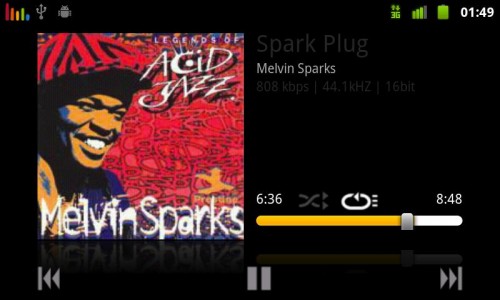Every once in a while, a technology emerges that makes you wonder why you haven’t thought about it before. The Singapore-made Orastream app is one such example.
It enables music players to stream the songs at as high a quality as possible, depending on the network that is delivering the songs. This means you always enjoy the highest quality music, without worrying about the dreaded break in transmission – a boon to future music services on the go.
Let’s take your phone, for example. When you are at a cafe and you can receive a good 3G signal, it can stream at a high bit rate of, say, 800Kbps, but if you step into an underground mall, you may only get a slower 2G network link, which means the songs will then be streamed at a much lower bit rate, say, as low as 24Kbps.
Either way, the music continues playing, because the technology adapts automatically to the network conditions. There are no breaks in songs even if you switch from, say, 3G to 2G, as the folks behind Orastream showed in a demo to Techgoondu last week.
First developed at Singapore’s government-funded A*Star labs several years ago, Orastream is the brand name for an adaptive streaming music format called MPEG4SLS. This, incidentally, is also the name for the company spun off from A*Star that now develops Orastream.
The uses for the technology are numerous. For starters, the company is looking to offer a Dropbox-like service where musicians can upload their songs – at the highest lossless quality – to potential record company partners. Instead of sending various demo tapes or CDs or storing different formats of the same song, they can continually update the catalog of songs easily.
To do this, the Singapore firm has even developed simple tools for the musicians to create an app that plays back the music automatically from this library.
Needless to say, this can be applied to consumers as well, as a sort of cloud-based music locker service. You can essentially upload your entire library – at a cost, of course – to the cloud and have the Orastream technology stream the music to your PC, MP3 player and even hi-fi (if someone develops a Squeezebox plug-in, for example).
This means you don’t have to keep separate copies of your library, like MP3s for your portable players and FLAC lossless tracks for your hi-fi or PC. You can just stream them all in one format using Orastream. In countries with well-connected mobile and fibre broadband networks, this is an ideal solution, and better than the other cloud-based music offerings out there which usually only support the “lo-fi” but common MP3 format.
To be fair, there is still a lot more to be done for Orastream before this becomes reality. But the technology is out there and the business model is already proven, so the potential is clear.
And compared to rival technologies from, say, Microsoft, Orastream is truly dynamic, as in, it does not have to be set with a few pre-determined bit-rates, but is fine-tunes the bit rate or quality according to the network quality. If a network offers 300Kbps, the stream will be as close to 300Kbps as possible, perhaps at 290Kbps.
One more thing: Orastream can stream songs at up to 24 bits/192kHz, which is higher than a regular CD’s 16/44.1kHz. This will be a boon for audiophiles looking to stream their songs both over Wi-Fi at home (at high quality) and over the Net to their portable players.
Do check out the Orastream app available for the Mac, iOS and Android. Still very much like demos, these simple players show the potential of a technology that could change the way you enjoy music in future.












